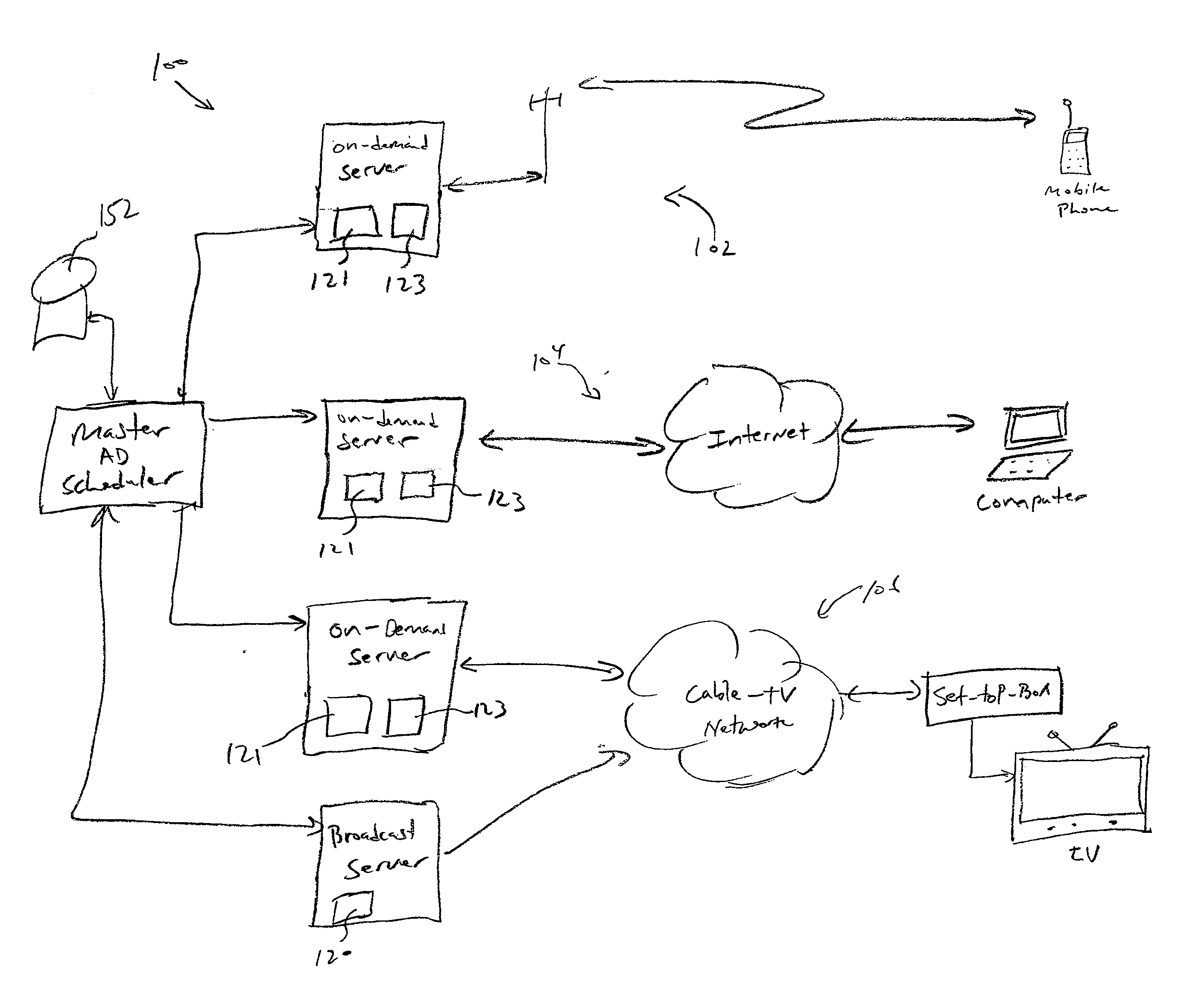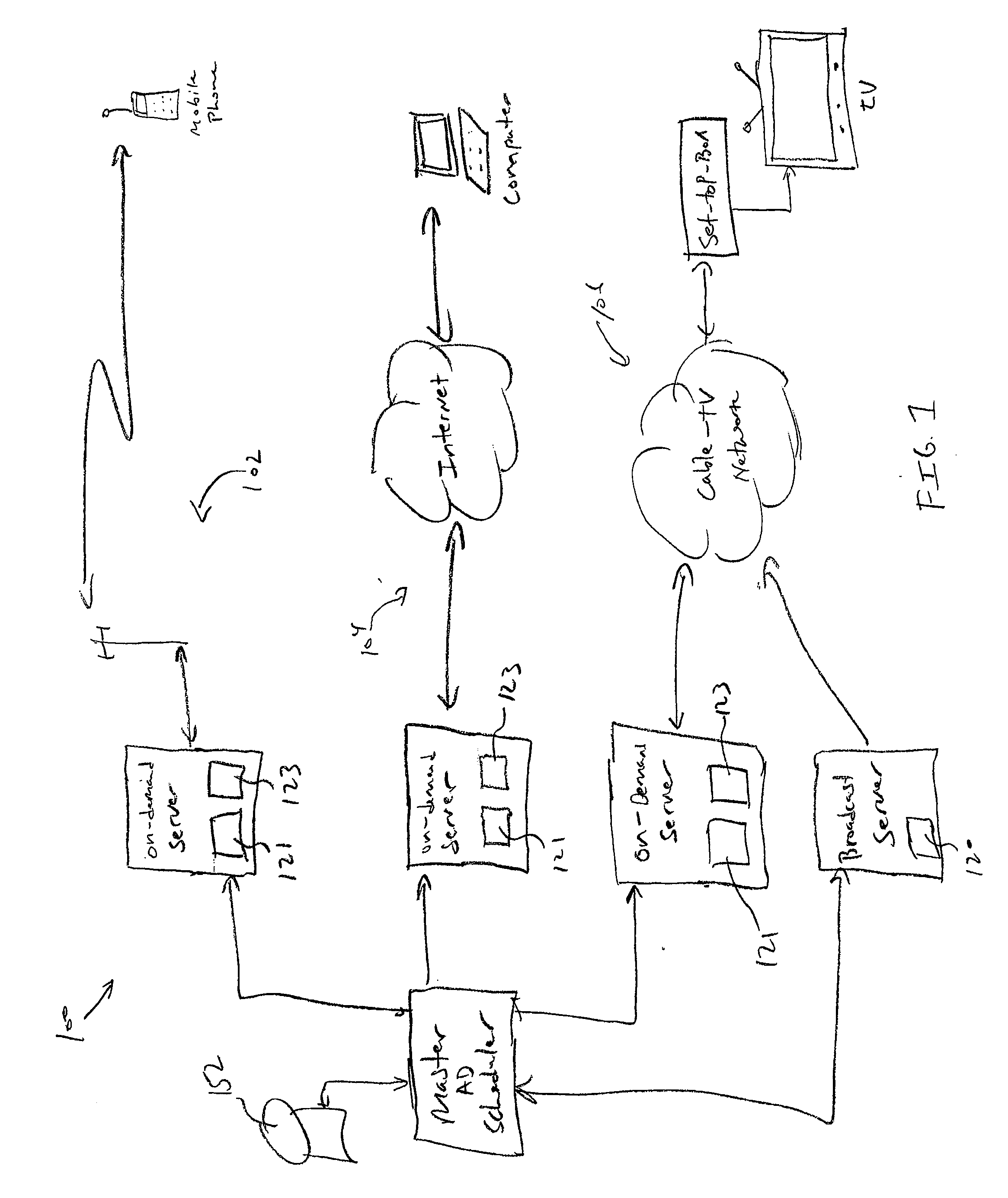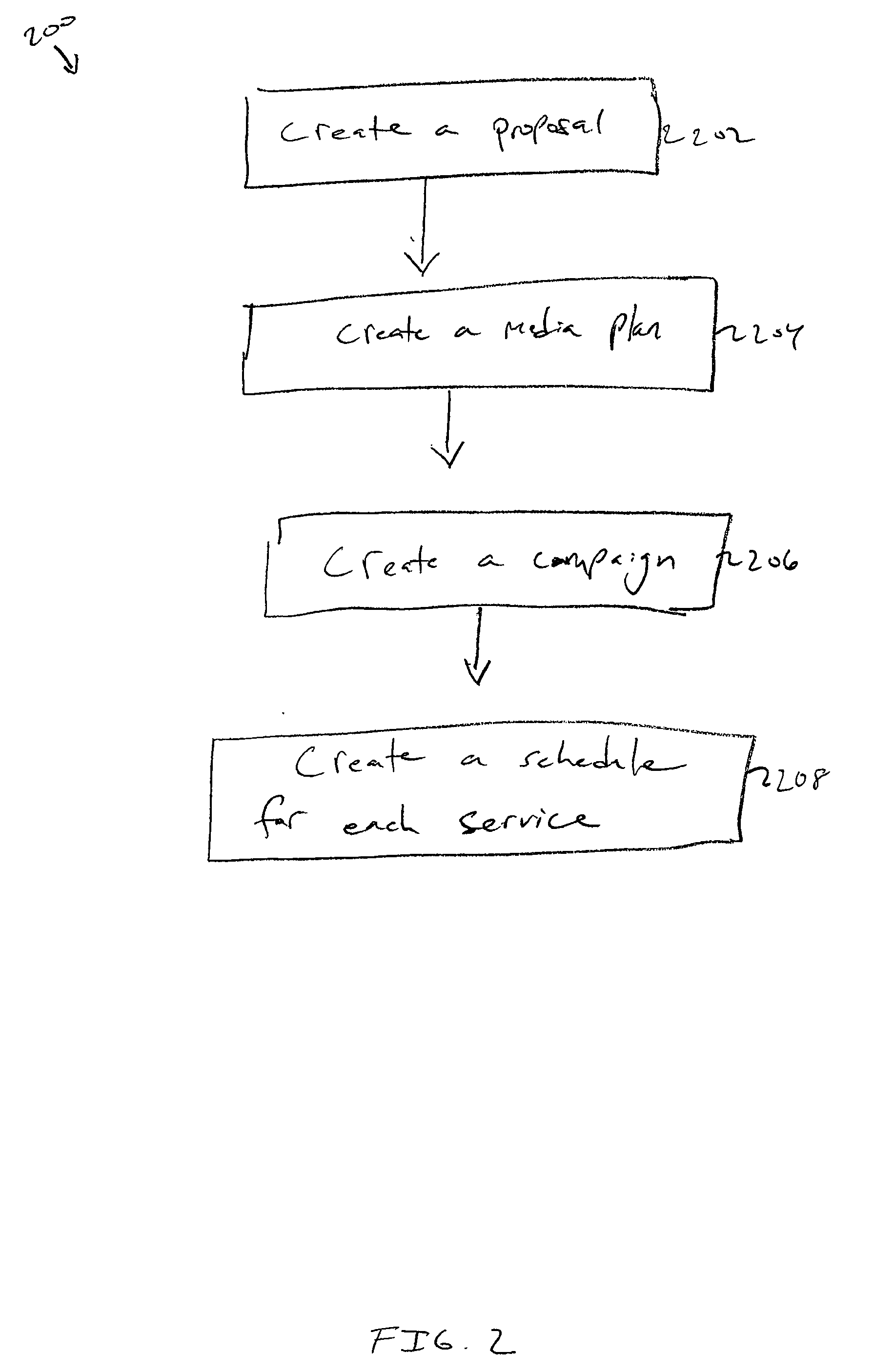Ad Scheduling Systems and Methods
- Summary
- Abstract
- Description
- Claims
- Application Information
AI Technical Summary
Benefits of technology
Problems solved by technology
Method used
Image
Examples
Embodiment Construction
[0021] As used herein, the words “a” and “an” mean “one or more.”
[0022]FIG. 1 illustrates an entertainment system 100 according to an embodiment of the invention. As shown in FIG. 1, system 100 may include multiple content delivery platforms. In the example shown, there are three content delivery platforms: a mobile phone network platform 102, an Internet platform 104, and a digital cable TV platform 106. Each content delivery platform may have one or more content services (e.g., a broadcast service and an on-demand service). Accordingly, each content delivery platform may have a broadcast server 108 for broadcasting content over multiple broadcast channels and / or an on-demand server 109 for transmitting content to a user in response to the user requesting the content. Typically, the broadcast channels are based on a music genre. For example, servers 108 may broadcast a Rock channel, a Classical channel, and a Jazz channel using platform 102, 104 and 106, respectively. As used herei...
PUM
 Login to View More
Login to View More Abstract
Description
Claims
Application Information
 Login to View More
Login to View More - R&D
- Intellectual Property
- Life Sciences
- Materials
- Tech Scout
- Unparalleled Data Quality
- Higher Quality Content
- 60% Fewer Hallucinations
Browse by: Latest US Patents, China's latest patents, Technical Efficacy Thesaurus, Application Domain, Technology Topic, Popular Technical Reports.
© 2025 PatSnap. All rights reserved.Legal|Privacy policy|Modern Slavery Act Transparency Statement|Sitemap|About US| Contact US: help@patsnap.com



